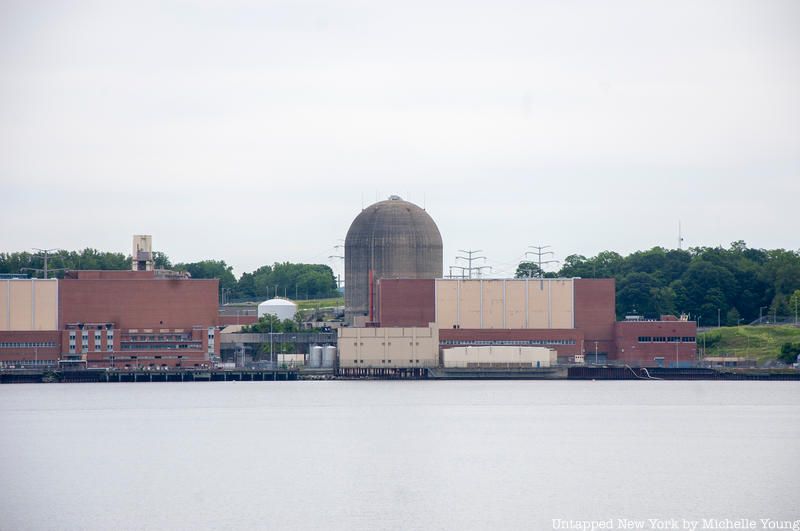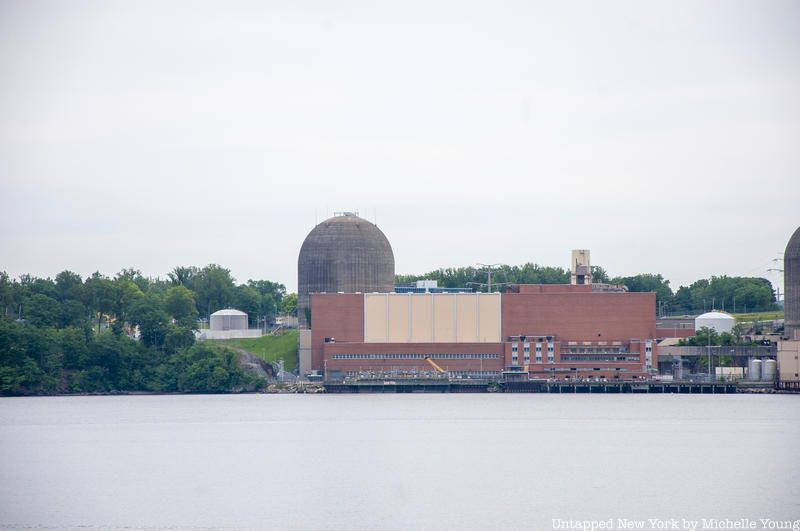Last Chance to Catch NYC's Holiday Notalgia Train
We met the voices of the NYC subway on our nostalgia ride this weekend!


Have you ever wondered where the power you use to run your dishwasher (a luxury in the city) or to play your favorite television show comes from? New York State’s energy is generated through a host of sources including natural gas, nuclear, hydroelectric power, and renewable resources like wind and solar power. One crucial source of energy for the state used to come from the Indian Point Energy Center located in Buchanan, New York, 25 miles north of Manhattan. However, on April 30, 2021, Indian Point permanently stopped generating energy after Unit 3, its final nuclear reactor, was retired earlier than expected. As the last nuclear power plant in the New York City region, its closing marks the end of an era.

The Indian Point nuclear power plant opened Unit 1—its first nuclear reactor—in 1962, but it was shut down in 1974. Units 2 and 3 of the center began operations in 1974 and 1976 respectively, with Unit 2 being retired in April 2020. Over the 59 years it remained in operation, Indian Point produced over 565 terawatt-hours (TWh) of electricity, which the Consolidated Edison grid system distributed across New York City’s five boroughs and Westchester County.
Entergy, Indian Point’s operator, retired Units 2 and 3 before the expiration of their operating licenses. In 2007, they began working to secure a 20-year license renewal for both reactors but faced pushback from the state amid environmental and safety concerns. At the closing of Indian Point Governor Andrew Cuomo said, “Since my time as Attorney General, I have been deeply concerned with the safety of the Indian Point nuclear power facility. It does not belong on the Hudson River and in close proximity to the most densely populated area in the country,”

Over the center’s time in operation, there have been several worrying incidents including missing and damaged bolts on the structures of both reactors. Moreover, in May 2015, a transformer fire sent thousands of gallons of oil into the Hudson River. Besides these issues, Indian Point’s two operating units were also built within one mile of a major seismic zone, making them especially vulnerable to earthquakes. Increased operation costs coupled with lowering electricity prices factored into Entergy’s decision to close the reactors early. As a result, in 2017, Entergy voluntarily negotiated an agreement with the state and the environmental group Riverkeeper to retire the reactors by 2021.

With the closing of Unit 3, New York State lost almost 1,040 megawatts of nuclear-generating capacity, leaving only 3,200 MW of nuclear capacity at three plants located throughout upstate New York. In response to the closing of Units 2 and 3, New York State has worked to make up the difference by introducing three natural gas-fired power plants over the last three years. These included Bayonne Energy Center II, CPV Valley Energy Center, and Cricket Valley Energy Center.

However, the replacement of one of New York State’s strongest nuclear energy sources has led to concerns about potential effects on the state’s ability to continue reducing its net-carbon emissions. Before its retirement, Indian Point was not only one of New York’s ten largest electricity producers but also at the forefront of the state’s carbon-free electricity production. As nuclear reactors do not produce carbon emissions while in operation, Indian Point helped produce over 270 TWh’s of carbon-free electricity for the state. In relation, this energy accounted for around 81% of the clean electricity in downstate New York.

Recent data from Nuclear New York estimates that the state’s overall carbon-free energy production will be reduced from 60% in 2019 to only 49% by 2022. This would result from a decrease in nuclear energy production of 44.8% to 27.3%, followed by an increase of fossil fuel-produced energy from 51.8% to 67.1% in compensation. It is also estimated that the center’s closing could result in the release of 12 to 15 million metric tons of extra CO2-equivalent emissions into the air.

At the same time, other experts believe that New York State will continue to remain on track to meet its carbon-free emission targets. They point to the expected growth in renewable energy sources like wind, which has doubled in New York State from 2009 to 2019. Solar energy has also taken off over the last ten years, now totaling 2.8 gigawatts of installed capacity, an 1,800% increase from 2011 to 2020. In addition, in 2019, New York State enacted the Climate Leadership and Community Protection Act, which mandates that its electricity system use 70% renewable energy by 2030 and be 100% carbon-free by 2040. The state is also a participant in the Regional Greenhouse Gas Initiative—which requires reductions in power sector carbon pollution through a mandatory and enforceable regional cap on overall power plant carbon pollution. In the end, only time will tell if the closure of the Indian Point Energy Center aids in or deters New York State’s environmental efforts.
Next, check out The Top 10 Secrets Of The NYC Department of Environmental Protection (DEP)!
Subscribe to our newsletter